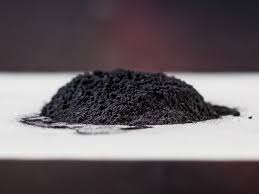
The Role of Carbon Black in Tires: Why It’s Essential
2024-09-18
Carbon black is a crucial component in the manufacturing of tires, playing an essential role in enhancing their performance and longevity. Here’s a detailed look into why carbon black is used in tires, its typical concentrations, and the benefits it provides when mixed with rubber.

Why is Carbon Black Used in Tires?
Carbon black is a fine, black powder produced by burning hydrocarbons in insufficient air. Its primary role in tires is to reinforce the rubber, which significantly enhances various properties crucial for tire performance. Here’s why carbon black is indispensable in tire manufacturing:
Durability and Strength: Carbon black particles are distributed throughout the rubber matrix, which strengthens the rubber and increases the tire’s resistance to wear and tear. This makes the tires more durable and helps them last longer under the stress of daily driving.
Improved Grip and Traction: The addition of carbon black to the rubber improves the grip of the tires on different surfaces. This is essential for safety, providing better traction on both wet and dry roads.
UV Protection: Tires are constantly exposed to sunlight, which can cause degradation over time. Carbon black absorbs ultraviolet (UV) light and helps protect the rubber from UV damage, which prolongs the tire’s lifespan.
Heat Dissipation: During driving, tires generate heat due to friction with the road surface. Carbon black helps dissipate this heat more effectively, reducing the risk of overheating and blowouts.
Typical Carbon Black Concentration in Tires
The concentration of carbon black in tires can vary based on the specific type of tire and its intended use. On average, carbon black constitutes around 30-40% of the rubber compound used in tires. This high percentage highlights its importance in achieving the desired balance between performance, durability, and safety.
Passenger Tires: For standard passenger vehicles, the carbon black content is typically around 30-35%. This ensures a good balance between performance and longevity.
Heavy-Duty and Truck Tires: For tires used in trucks and heavy-duty vehicles, the carbon black concentration can be higher, ranging from 35-40%. These tires need additional reinforcement to handle greater loads and stresses.
Why Mix Carbon Black with Rubber?
Mixing carbon black with rubber serves multiple purposes, all of which are vital for optimal tire performance. Here’s why this combination is so effective:
Enhanced Mechanical Properties: Carbon black improves the tensile strength of rubber, making it more resistant to tearing and abrasions. This is crucial for withstanding the forces and stresses encountered during driving.
Better Performance: The improved mechanical properties translate into better overall tire performance. Vehicles benefit from increased stability, improved handling, and a smoother ride.
Cost-Effectiveness: While carbon black adds to the cost of manufacturing tires, its benefits in terms of durability and performance often outweigh the additional expense. It helps in reducing the frequency of tire replacements and repairs, ultimately saving costs over time.
Customization and Versatility: Different types of carbon black can be used to tailor the properties of the rubber for specific applications. This versatility allows manufacturers to customize tires for various driving conditions and performance requirements.
Conclusion
Carbon black is more than just a filler; it is a critical ingredient that enhances the performance and longevity of tires. By reinforcing the rubber, improving grip and traction, protecting against UV damage, and aiding in heat dissipation, carbon black ensures that tires can handle the demands of everyday driving.
Best Carbon Black
If you don’t know what kind of carbon black to choose, you might as well try DERY. As a professional carbon black manufacturer in China, dery can provide you with professional products and services. Welcome to contact us for detailed ordering information and services!
Previous page:What are the uses of Carbon black pigment?
Next page:Carbon black: a versatile material with wide applications
